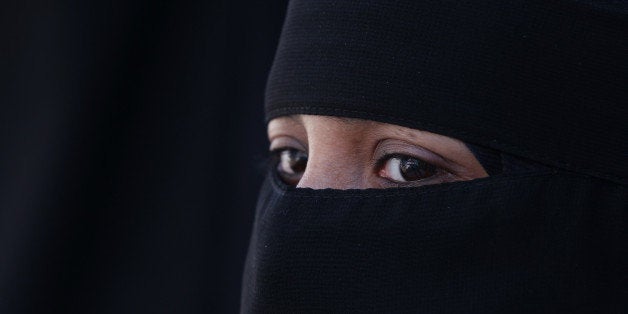
On July 1, 2012, the European Court of Human Rights (ECHR) upheld a 2010 French law that prohibited burqas and other face-covering veils in public spaces. In 2004, the French parliament adopted a similar law prohibits headscarves in public schools. Both measures have been highly controversial. Immigration from former colonies in North and Sub-Saharan Africa has resulted in France having largest Muslim population in Europe. Many Muslim women interpret their religion to require scarves and veils in public.
After a legal action was filed by a Muslim woman challenging the burqa ban, the French courts ruled that the law did not have a disproportionate impact on Muslim women or interfere with their rights to freedom of religion. That decision was appealed to the ECHR, an international court that adjudicates cases alleging violations of human rights. The claims against France included sex, religion and ethnic origin discrimination.
The ECHR rejected the challenger's claims. It accepted France's argument that women wearing face-covering veils in public spaces could undermine social cohesion. French residents, the Court found, should not be subjected to practices that inhibit interpersonal relationships that are an "indispensable element of community life within [French] society." The ECHR conceded that the ban disproportionately affected Muslim women but, "it was not expressly based on the religious connotation of the clothing in question but solely on the fact that it concealed the face."
Contrary to the ECHR's suggestions, France's anti-veil laws discriminate against Muslim women based on their ethnicity, religion, color, and national origin. The veil laws would violate American antidiscrimination laws and the right to the free exercise of religious protected by the First Amendment of the U.S. Constitution. The French laws treat Muslim women differently and less favorably than similarly situated men and non-Muslim women. That many French residents consider face-covering veils an affront to their secular traditions would not provide a legal justification under American laws.
The effects of discriminatory practices in France are not limited to Muslim women. A large proportion of France's ethnic minorities are segregated in public housing complexes in the suburban communities (banlieues) that surround French cities. The banlieues are geographically isolated and ethnically distinct from surrounding communities. Many of the public housing complexes in the banlieues are neglected and physically deteriorating. Poverty, substandard schools, low levels of educational attainment, crime and unemployment are common features in these neighborhoods.
Young banlieusards (banlieue residents) are stereotyped as gang members, criminals and potential terrorists. They are otherized as "immigrants" even though many of them are second and third generation citizens who were born in France. Banlieusards are routinely targeted by police who abuse and harass them using identity checks as a pretext. These discriminatory practices treat the young men as second-class citizens and impinge on their rights to freedom of movement and privacy. Police brutality provoked large-scale riots in 1983, the 1990s and 2005.
France does not have anything like America's history and legacy of racial segregation. During the first half of the 20th century, African American artists and entertainers moved to France to escape segregation and discrimination in the U.S. Racial and ethnic categories are not officially recognized in France. The French census does not disaggregate data by race or ethnicity. French laws prohibit officials from doing so. France is officially colorblind but its race-neutral policies do not prevent the bias and discrimination caused by "colorblind racism."
Race and ethnicity are important but largely unacknowledged aspects of the immigration debates in France. The term "immigrant" has become a shorthand reference to ethnic minorities who are harshly criticized for failing to embrace French values and traditions. This is particularly so in the case of Muslims as Islam is considered by many to be incompatible with French values. These groups are treated as permanent strangers unworthy of acceptance by the majority population. The problem is not that North and sub-Saharan Africans refuse to integrate into French society. The reality is France won't allow them to do so.
Leland Ware is the Louis L. Redding Chair and Professor for the Study of Law and Public Policy at the University of Delaware.
